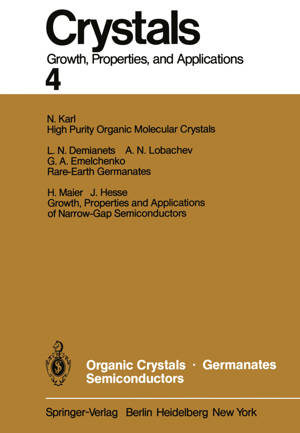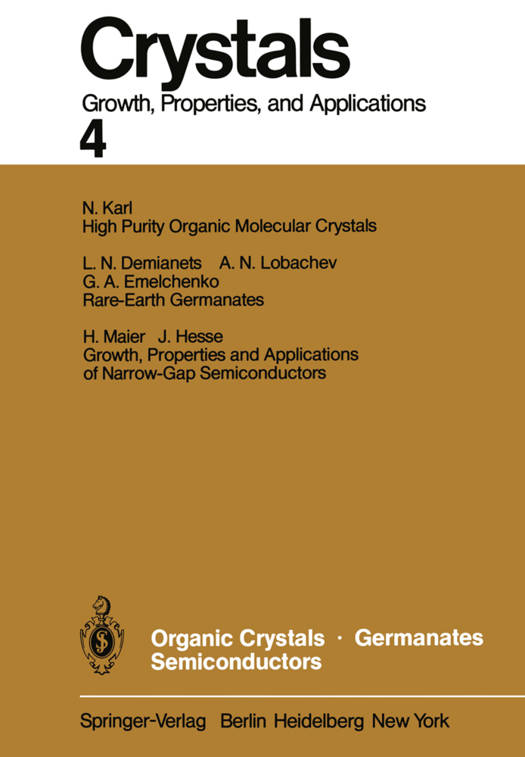
- Afhalen na 1 uur in een winkel met voorraad
- Gratis thuislevering in België vanaf € 30
- Ruim aanbod met 7 miljoen producten
- Afhalen na 1 uur in een winkel met voorraad
- Gratis thuislevering in België vanaf € 30
- Ruim aanbod met 7 miljoen producten
Zoeken
Organic Crystals Germanates Semiconductors
Norbert Karl, Ludmila N Demianets, Anatoly N Lobachev, Gennadi A Emelchenko, Horst Maier, Joachim Hesse
€ 162,45
+ 324 punten
Omschrijving
1.1 Preface Organic chemistry had its origin in chemicals which are synthesized by living cells. These chemicals consist of molecules whose skeletons are built up of carbon atoms. The remaining valences are connected with ligands such as hydrogen, halo- gens, -OH, ==O, -NH . Some of the skeletal carbon atoms can be replaced by non- 2 metals such as oxygen, nitrogen, or sulfur {"heteroatoms"}. It is characteristic for the living world, not to be in a crystalline state. However it is possible to obtain single crystals from many organic compounds both of natural and synthetic origin. For a number of years the physics and chem- istry of these crystals have stimulated fundamental research on a rapidly growing scale. The great variety of possible organic structures {as compared to inorganics} opens up a large field of new materials and of novel material properties; for previous literature reviews and data compilations see 1-40) and Chap. 6. The art of producing good and pure organic single crystals has developed hand- in-hand with the ever growing requirements of basic research, arising from its interest in fundamental interactions in the solid state. Interactions manifest themselves in a very detailed way by energy transfer.
Specificaties
Betrokkenen
- Auteur(s):
- Uitgeverij:
Inhoud
- Aantal bladzijden:
- 224
- Taal:
- Engels
- Reeks:
- Reeksnummer:
- nr. 4
Eigenschappen
- Productcode (EAN):
- 9783642677663
- Verschijningsdatum:
- 15/11/2011
- Uitvoering:
- Paperback
- Formaat:
- Trade paperback (VS)
- Afmetingen:
- 170 mm x 244 mm
- Gewicht:
- 381 g

Alleen bij Standaard Boekhandel
+ 324 punten op je klantenkaart van Standaard Boekhandel
Beoordelingen
We publiceren alleen reviews die voldoen aan de voorwaarden voor reviews. Bekijk onze voorwaarden voor reviews.








